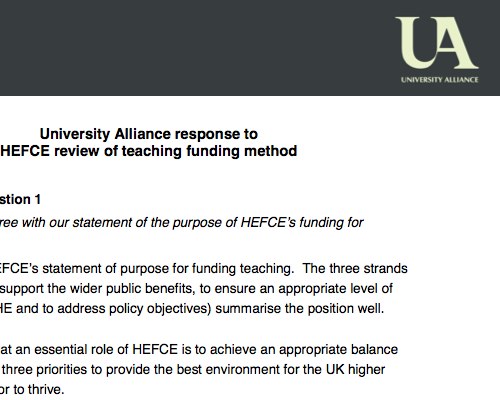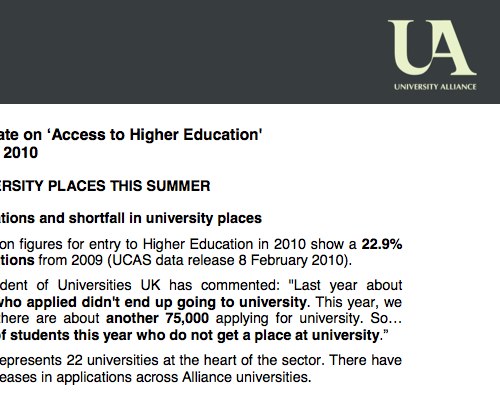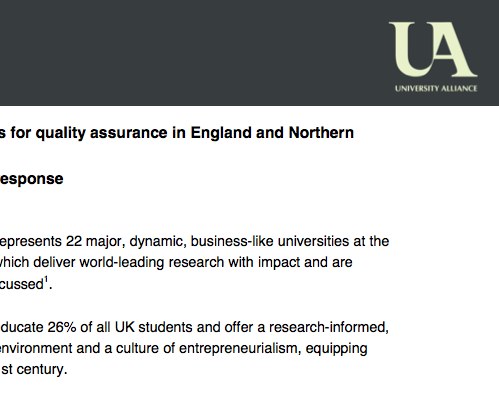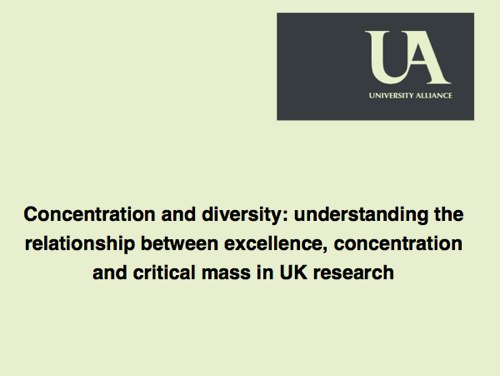University Alliance response to HEFCE review of teaching funding method
…responsive and dynamic? Consultation question 8: Do you broadly agree that, to achieve value for money, our funding method should continue to reflect the impact of income from tuition fees and contributions from employers? Consultation question 9: Do you consider that any other principles or features should be fundamental to our teaching funding method? Consultation question 10: What are the advantages / disadvantages associated with each of the…






